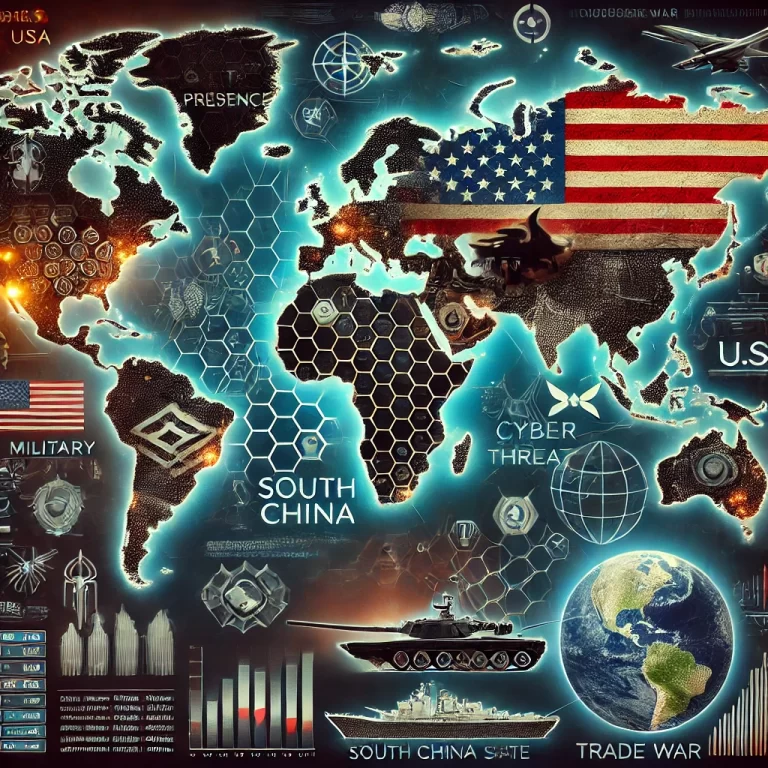
The Future of AI and Computing
Huang and Zuckerberg envision a future where AI not only generates but also dynamically engages with content, offering highly personalised recommendations and interactive virtual environments.
In a recent conversation at the SIGGRAPH 2024 conference, Jensen Huang, CEO of NVIDIA, and Mark Zuckerberg, CEO of Meta, explored the transformative impact of generative AI on modern computing platforms. Both leaders are at the forefront of technological innovation, with Huang being recognised for his pioneering work in graphics processing units (GPUs) and AI, while Zuckerberg has led Meta in reshaping social media and virtual interactions. This article delves into their discussion, highlighting key insights into AI integration, future technologies, and the implications for various industries.
AI Integration Across Platforms
Huang and Zuckerberg discussed the transformative effects of generative AI on digital platforms. Meta’s advancements in AI, particularly in computer vision and language models, are evident in products like Instagram and Facebook. These technologies enhance user experiences with features such as real-time translation and sophisticated content moderation. For example, Meta’s AI-driven content filters maintain community standards by detecting and removing inappropriate content while personalising user feeds based on behaviour and preferences.
Zuckerberg emphasised that AI integration goes beyond automation to create personalised experiences. He stated, “In the future, every business will have an AI agent that interfaces with their customers,” underscoring AI’s role as a fundamental component of customer engagement. AI agents will handle various interactions, providing instant support and personalised recommendations, thus refining user experiences across platforms.
Imagine a scenario where you visit an online clothing store. Here’s how AI integration can enhance your experience:
- Personalised Recommendations: As you browse the website, an AI system analyses your past purchases and browsing history to suggest items you might like. This is similar to how Instagram’s feed personalises content based on your interests.
- Virtual Try-On: The store uses computer vision technology to offer a virtual try-on feature. You can upload a photo of yourself or use your webcam, and the AI superimposes images of clothing items onto your picture, allowing you to see how they would look on you.
- Real-Time Translation: If the store caters to international customers, the AI system can provide real-time translation of product descriptions, reviews, and customer service interactions, ensuring a seamless shopping experience for users who speak different languages.
- AI-Powered Chatbot: An AI agent is available 24/7 to answer your questions, assist with orders, and provide personalised fashion advice. If you ask about a specific product, the AI can instantly access inventory data to inform you about availability and shipping times.
- Content Moderation: If the store has a community forum or customer review section, AI-driven content filters ensure that all user-generated content adheres to community standards, removing any inappropriate or offensive posts.
By integrating these AI technologies, the online clothing store can offer a more engaging, efficient, and personalised shopping experience, similar to how Meta enhances user interactions on its platforms.
The Future of Generative AI
The potential of generative AI to interact with content in innovative ways was a major theme in the discussion. Huang and Zuckerberg envision a future where AI not only generates but also dynamically engages with content, offering highly personalised recommendations and interactive virtual environments. Innovations such as “virtual assistants” that understand nuanced user requests or AI-generated content tailored to individual tastes exemplify these possibilities.
An example of the future of generative AI can be seen in Zuckerberg’s “AI Studio” platform. This tool enables users to create custom AI characters that can act as personal assistants. For instance, a small business owner could design an AI character tailored to their brand’s personality, which then interacts with customers in real-time, providing personalised recommendations and support. This innovation allows businesses to engage with their audience in a more dynamic and personalised way, enhancing the overall customer experience.
Advancements in Smart Glasses and Mixed Reality
A significant portion of the dialogue focused on “smart glasses” and “mixed reality”. Both leaders highlighted ongoing improvements in display technologies and AI integration, aiming for immersive user experiences. Recent prototypes of smart glasses developed by Meta utilise AI to adjust visuals based on user interactions and environmental conditions, signifying a leap towards more seamless and intuitive mixed-reality experiences.
Huang noted that these advancements could lead to applications in various fields, including education and training, where immersive environments can enhance learning outcomes. The blending of digital and physical worlds through smart glasses could redefine how we interact with information and each other.
Scenario: Enhanced Medical Training with Smart Glasses
A medical training institution integrates the latest smart glasses with mixed reality capabilities into its curriculum. These smart glasses, developed by Meta, feature advanced AI and display technologies.
Application:
- Interactive Surgical Simulations: Medical students wear smart glasses during surgical simulations. The glasses overlay digital information onto the physical simulation environment, such as anatomical labels, real-time feedback on techniques, and step-by-step guides. The AI adjusts the visuals based on the student’s actions and environmental changes, providing a highly tailored and immersive learning experience.
- Real-Time Guidance: During a simulated surgery, the smart glasses use AI to monitor the student’s performance and provide real-time feedback. For example, if a student’s hand is positioned incorrectly, the glasses highlight the correct position and offer corrective suggestions. This immediate feedback helps students refine their skills more efficiently.
- Remote Expert Assistance: The glasses also enable remote experts to observe the training session through a live feed. They can annotate the student’s view with additional instructions or feedback and even interact with the simulation in real-time, guiding the student through complex procedures.
Outcome
The integration of smart glasses enhances the training environment, making it more interactive and effective. Students gain hands-on experience with real-time feedback and expert guidance, leading to better preparedness for actual surgical procedures. The immersive nature of the mixed reality environment helps bridge the gap between theoretical knowledge and practical skills.
AI Accessibility and Customisation
The importance of making AI more accessible and customisable was emphasised by Huang and Zuckerberg. They discussed how “open-source AI platforms” allow businesses and individuals to develop tailored AI solutions, fostering innovation and flexibility. NVIDIA’s open-source tools enable developers to create specialised AI models for various applications, from healthcare to entertainment.
Zuckerberg remarked, “The goal is to democratise AI, making it available to everyone, not just large corporations.” This approach supports diverse use cases and promotes continuous advancement in AI technologies, ensuring that smaller players can compete in the AI landscape.
Challenges and Progress in AI Infrastructure
The discussion also addressed the challenges in AI infrastructure, including the need for scalable solutions and ethical considerations. Huang and Zuckerberg highlighted the balance between technological progress and practical implementation. Addressing issues such as “computational efficiency” and “ethical AI use” is crucial for realising the full potential of AI.
Zuckerberg pointed out that as AI becomes more integrated into daily life, it is essential to ensure that users understand its implications and can use it responsibly. This includes ongoing education about AI’s capabilities and limitations.
Conclusion
The insights from Jensen Huang and Mark Zuckerberg underscore the transformative potential of AI in shaping future computing platforms. As generative AI continues to advance, its integration into mixed reality and personalised interactions will redefine digital experiences. Staying informed and adaptable will be key to harnessing these innovations and driving future developments in AI. The collaboration between these two tech giants signals a promising future where AI not only enhances technology but also enriches human experiences across various domains.
Aric Jabari is at Fellow at the Sixteenth Council



